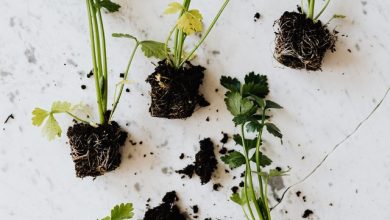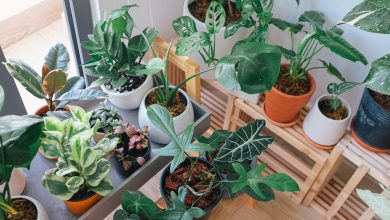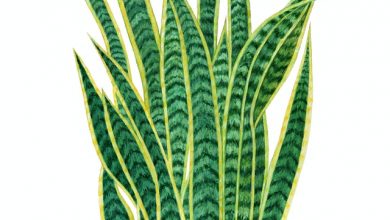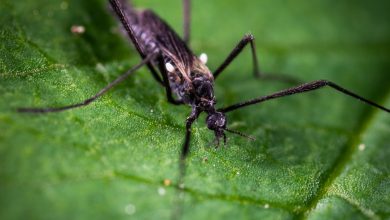How to Keep Cats Out of Plants
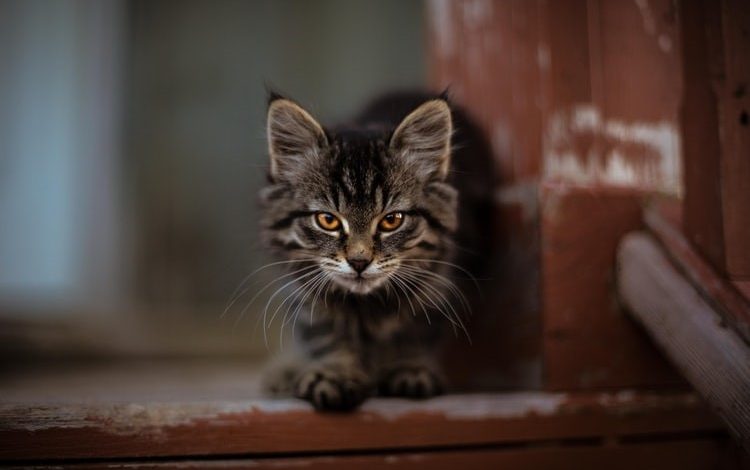
Houseplants are an admirable type of vegetation, so much so that even cats compete with humans for the plants’ beautification and refreshing quality. As we keep them in different strategic positions within our homes to bring some liveness around us, domestic cats can get in the way.
They munch on garden leaves, damaging their foliage in the process. Cats may even decide to make these houseplants their playmates. Sadly, when these plants no longer have the strength to withstand the cats’ bites and drags, the plants start to lose their charm.
This unfriendly interaction is discouraging for houseplants enthusiasts but shouldn’t make you reconsider your interest in decorating your home with some greenery. You don’t even have to choose between your houseplants and your indoor cat. You can have them both as you discover how to keep cats from your favorite houseplants. So read along.
1. Use Some Stratum of Stone Mulch
When domestic cats need to ease themselves, besides using their litter box, they look nowhere else than in the direction of the houseplants. They love the loose sand that’s present in the jar. Thus, they excrete there to feel better.
To stop this naughtiness, pile some small stones together on the surface of the sand. You can get creative by using a bunch of discarded items like a wine cork, seashells, or opt for broken ceramics. However, do ensure they’re not too clustered to avoid suffocating the plants.
2. Create a Scary Environment
Try to scare your cat whenever it goes near your plant. Get something that makes a shrieking noise when the cat comes close to your houseplant. That way, the cat may altogether avoid the area. You can go to a toy store and get an object that moves and makes noise simultaneously.
We advise that you resort to this gimmick as the last option, as it might be distressing for your pet.
3. Use Sensitive Ground Cover
You can create a sticky ground that’s uncomfortable for your cat to walk over or get a plastic carpet runner. Your kitty’s feet are quite sensitive to this item. Expose the little cleats to their feet, and then place your plant on it. The cleats have no adverse effects on your pet. However, cats don’t appreciate the cleats’ feel on their paws because they prick the cats. If your plant’s on the shelf, you may cut the cleats into pieces and then place them on the shelves.

4. Provide Plants for Your Cat
What better way to drive off a leaf-chewing cat than to provide such a cat with leaves to munch? You can provide a pot of mint, catnip, or thyme for your cat. These plants are equally safe for them. Position them in strategic locations around your house but away from your houseplants.
Meanwhile, some plants are dangerous to your cat’s health. Thus, they can’t serve the above purpose. Some of them include:
- Tomato
- Jade plant
- English Ivy
- Pothos
- Aloe vera
- Lilies
- Coleus
- Poinsettia
- Dumbcane
- Begonia
- Chrysanthemum
However, if your cat doesn’t gnaw on your houseplants, you needn’t worry about providing the recommended plants for them.
5. Always Keep the Cat Litter Box Clean
Your cat may be competing for your plants because they find their litter box sorely unattractive. The reason may be that the waste box is unclean, and the cat has simply grown tired of it. Swiftly discover the cause and proffer a solution so you’d get some break from your pesky kitten.
6. Reposition Your Plants
You can look around for a better place to position your plants. Ensure to place the houseplants in isolated areas where they’re far from any furniture to prevent your cats from climbing the furniture to reach your plants. You can also use protective shields for your pot plants. If you have flowers placed on shelves or window sills, get a birdcage to protect them from the reach of your kitty.
7. Use a Spray Bottle
You can deter your cat from your plants in a more cheerful manner. Put in some water in your spray container and sprinkle the water on your cat at sight. These spray bottles are everywhere in the market. With just one, you can get the job done.
Although, it’s likely that with this method, your cat may get mischievous and discover other ways to reach your plants. However, this trick does work on some kittens, so you can give it a shot unless you find it inappropriate.
8. Apply Repellant Spray
It wouldn’t be all fun and games for your cat anymore once you spray your houseplants with some repellant sprays. If you don’t like to buy one, you can decide to do it yourself courtesy your household ingredients.
Pungent soaps like citrus or lavender mixed with water can substitute for the market repellant sprays. You can also put some garlic in water to serve as a deterrent to your cat. Alternatively, peel some oranges or lemon and place them in your plant pot.
If that isn’t enough, you can spritz some chili or cayenne pepper around your houseplants. Be wary of it getting into your cat’s body through their eyes or nose because it can be painful. You can also sprinkle your houseplants with some orange oil or saturated lemon juice. However, refrain from using dangerous citrus oil extracts like the ones present in shampoo and food additives.
We advise that you don’t use vinegar as a spray because it may kill the plant while repelling your cat.
9. Create a Room for Your Plants
It’s not too much to create a room for your houseplants. Once you do that, always keep the door to this room locked. Preferably, use a sunroom for adequate sunlight so the plant doesn’t die.
10. Cultivate Plants That Cats Dislike
Endeavor to grow plants that your cats dislike around your houseplants. Grow plants like scaredy cat plants around your houseplants. This type of plant oozes an offensive smell to the cat. Upon inhaling the scent, they wouldn’t go near your favorite houseplants anymore.
Another houseplant is rosemary. Cats dislike this plant because of its strong smell. Rosemary keeps cats off and also doubles as a food ingredient for your meals. Grow plants that have thorns on them. When your cats go close, the spines may prick them and serve as a deterrent. Cactus and rose can meet this purpose.
11. Make Use of Foil
Cats aren’t fans of aluminum foil. They find it irritating. You should put some foils to good use to repel your kitties from your plants. Cut a reasonable length of aluminum foil and wrap it around your plant pot or place it atop the plant soil. You’ll find your kitten running away like they’ve seen a ghost from their past eight lives.
12. Use an Aquarium to Protect Your Plant
You can place small to medium size plants in an aquarium with a screen cover. You needn’t worry about oxygen and light because the screen top allows all of these requirements. By so doing, your cat will be far from your plants. Similarly, you can use a cloche.

13. Pour Out Old Soil From Your Plant Pot
It’s not surprising behavior for cats to urinate in a plant pot. If you found out that your kitten did that, empty the old soil from your plant pot and get new earth into it. The smell of cat’s urine in the plant pot can entice the cat into repeating the same misbehavior. So doing a refill of the soil can deter cats away. When refilling, ensure that you use soils with strong fragrance but not toxic additives.
14. Train Your Cat
How best can you teach your cat some good behavior if not by training them? Whenever your kitten excretes in your plant pot, remove the waste and transport it into the litter box. Ensure your cat watches as you demonstrate this action. Below are some of the means to train your cat.
- Go on to celebrate your pet when they take to correction or accept your training. You can play with your pet, pat it on its good sides, buy it some toys, or feed it with its favorite meals.
- Keep your cat in a safe space with boundaries. Provide them their food, toy, and water within the said location. This method will help your cat make use of their litter box instead of moving around, looking for other places, like your plant pot, to defecate. However, only do this for a few days. A good cat would have learned their lesson by then.
Keep on trying the different methods of keeping cats away from houseplants until you find out the most effective way that works against your cat. Whatever means you choose to use eventually, ensure it isn’t harmful to your pet but only serves as a deterrent. Hopefully, your houseplants will begin to enjoy the peace they deserve and be in the best position to please you better.
